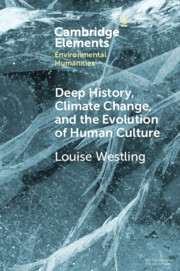Element contents
Deep History, Climate Change, and the Evolution of Human Culture
Published online by Cambridge University Press: 24 August 2022
Summary
- Type
- Element
- Information
- Online ISBN: 9781009257343Publisher: Cambridge University PressPrint publication: 08 September 2022
References
- 11
- Cited by

